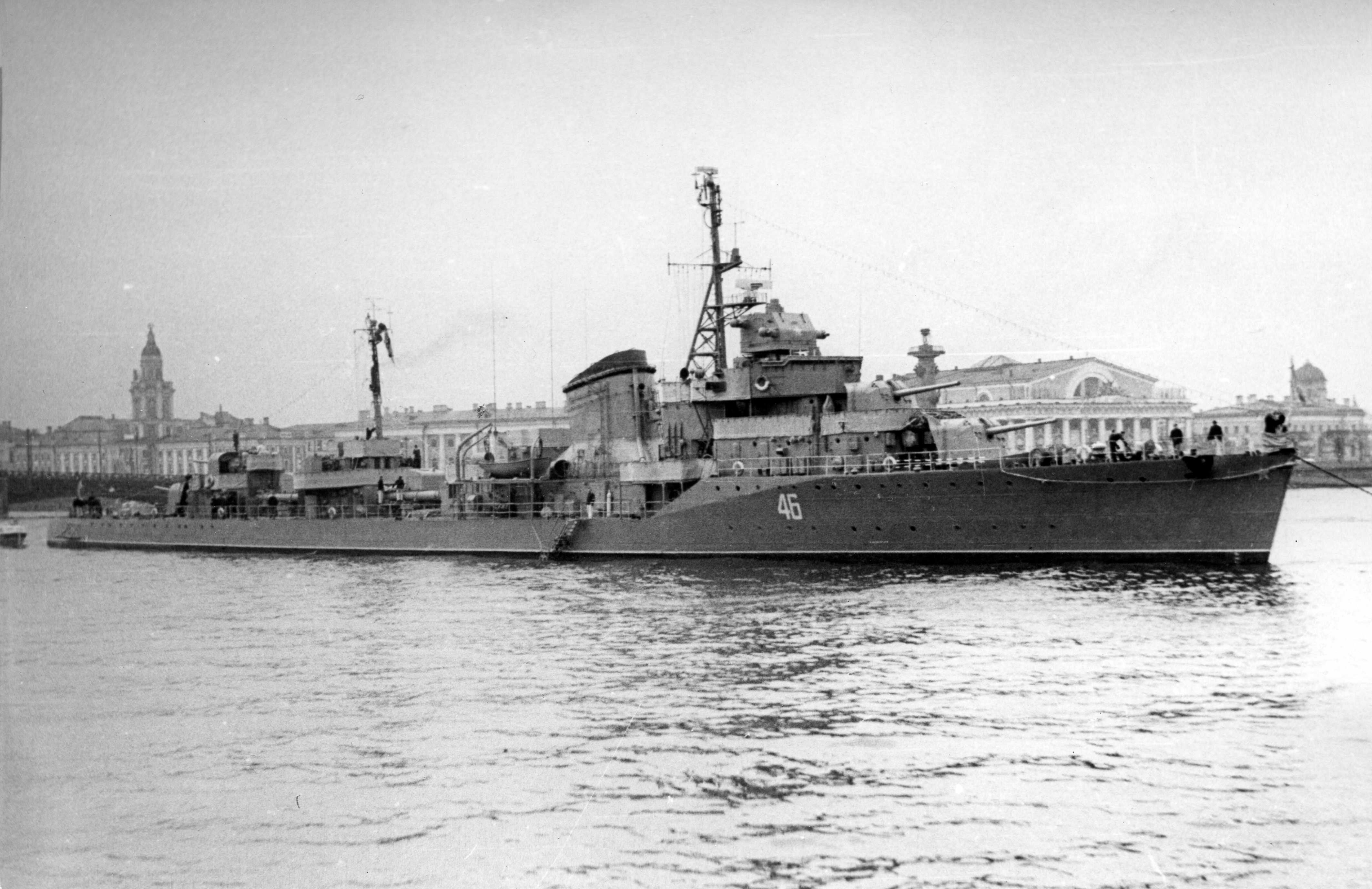
Gnevny classdestroyers (project 7according to the Russian classification) are vessels of Soviet construction dating back to the thirties.
It is a rather large class that would count as many as 48 units. In fact, they were built “only” 30, twenty of which survived the Second World War.
Gnevny Class Destroyer - Development And Technical
The construction of a new class of large warships was undertaken as part of the second five-year plan. In the design phase, the Soviets made use of the assistance of Italian technicians
The Gnevny were characterized by typical defects of Italian destroyers of the time - structural problems and lack of ability to keep the sea. Even the propulsion system was not without flaws.
These design flaws became apparent during the sea trials of 1936 to 1937. It was therefore decided to stop production to 30 units.
It was built with a modified version called Project 7U(Soobrazitel’nyj).
In total, 30 units were built, eight of which did not survive the Second World War.
Black Sea Fleet
The construction of the units of the Black Sea Fleet took place at the shipyards of Mykolaiv and Sevastopol. In all, six teams were built, four of which were sunk during the Second World War.
- BODRY - Entered service in 1938 and was demolished in 1950.
- Bystry - Entered service in 1938 was sunk on July 1, 1941, due to a collision with a mine.
- Bezuprechny - Entered service in 1938 and was sunk on June 26, 1942.
- Bditelny - Entered service in 1938 and was sunk on July 2, 1942.
- Boiky - Entered service in 1939 and was demolished in 1958.
- Bezposhchadny - Entered service in 1937 and was sunk on October 6, 1943, by Stukas airplanes.
Baltic Fleet
The ships of the Baltic Fleet were built in the shipyard in Leningrad (now St. Petersburg). Of nine units built, four were sunk, and one was damaged.
After the German invasion, all surviving units were transferred to the Northern Fleet.
- Gnevny - Entered service in 1939 and was sunk on June 23, 1941, by the impact of a mine.
- Gordy - Entered the service in 1938 and was transferred to the Northern Fleet in 1941. Demolished in the fifties.
- Gromky - Entered service in 1939 and was transferred to the Northern Fleet in 1941. Demolished in the fifties.
- Grozny - Entered service in 1939 and was transferred to the Northern Fleet in 1941. Demolished in the fifties.
- Gremyashchy - Entered service in 1939 and was transferred to the Northern Fleet in 1941. Demolished in 1958.
- Grozyashtchi - Entered service in 1939 and was damaged by a bombing near Leningrad. Demolished in the fifties.
- Sokrushitelny - Entered service in 1939 and was transferred to the Northern Fleet in 1941. Sank in a storm on November 22, 1942.
- Steregushchy - Entered service in 1939 and was sunk by bombing on September 21, 1941.
- Stremitleny - Entered service in 1938 and was transferred to the Northern Fleet in 1941. Sunk near Murmansk in a bombing on July 20, 1941.
Pacific Fleet
The units of the Pacific Fleet were built in Komsomolsk-na-Amure and were towed to Vladivostok because of the river Amur. All the components came from Mykolaiv and were transported to the construction site thanks to the Trans-Siberian.
Four surviving units of the Pacific Fleet were sold to the Chinese.
- Rezvy - Entered service in 1939 and was demolished in the fifties.
- Ryany - Entered service in 1940 and was demolished in the fifties.
- Raztropny - Entered service in 1941 and was demolished in the fifties.
- Redki - Entered service in 1941, fate unknown.
- Razyashtchy - Entered service in 1941 and was sold to China in 1955.
- Reshitelny - Entered service in 1941 and was sold to China in 1955.
- Retivy - Entered service in 1941 and was sold to China in 1955.
- Revnosty - Entered service in 1941 and was demolished in the fifties.
- Razyaryonny - Entered service in 1941 and was transferred the following year to the Northern Fleet. Used as a target ship in 1958.
- Razumny - Entered service in 1941. He was transferred to the Northern Fleet in 1942. Shipwrecked in the sixties.
- Rekordny - Entered service in 1941 and was demolished in the fifties.